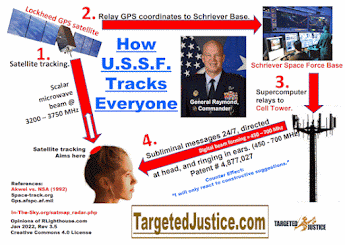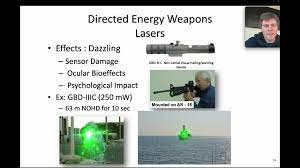Patent No. 6889085 Method and system for forming an acoustic signal from neural timing difference data
Patent No. 6889085
Method and system for forming an acoustic signal from neural timing difference data (Dawson, May 3, 2005)
Abstract
A non-invasive system and process for converting sensory data, e.g., visual, audio, taste, smell or touch, to neural firing timing differences in a human brain and using acoustic signals to generate the neural firing time differences. Data related to neural firing time differences, the acoustic signals, and a user's response map may be stored in memory. The user's response map may be used to more accurately map the calculated neural firing time differences to the correct neural locations.
Notes:
BACKGROUND
OF THE INVENTION
1. Field of the Invention
The present invention relates to a method and system for generating sensory
experiences. In particular, the present invention relates to a method and system
for forming an acoustic signal from neural timing difference data.
2. Description of Related Art
A conventional technique for generating neural activity in the human nervous
system requires surgical implants. The implants may comprise electronic connections
and wires that cause electronic impulses to interact with some portion of the
human nervous system, such as the human neural cortex, and thereby cause neural
activity in the human neural cortex. Researchers have successfully mapped audio
sensory data to the cochlear channel, and visual data to the visual cortex.
Conventional invasive techniques have several drawbacks. First, surgical implants
may cause patient trauma and medical complications during and/or after surgery.
Second, additional or on-going surgery may be required, particularly if new
technology is developed.
SUMMARY OF THE INVENTION
The present invention solves the foregoing drawbacks by providing a non-invasive
system and process that uses acoustic signals to generate sensory data, e.g.,
visual, audio, taste, smell or touch, within/onto the human neural cortex. The
system forms acoustic signals from neural timing difference data.
One advantage of the system is its adaptability to each individual user. Human
brains have some similarities, but they may vary in size, shape, number of convolutions,
etc. The present system comprises components that may be calibrated and a library
of acoustic signals that may be customized for each individual user. The system
is advantageously configured to allow vision-impaired and/or hearing-impaired
users to experience at least some visual and/or auditory sensations.
Another advantage of the system is that no invasive surgery is needed to assist
a person, such as a blind or deaf person, to experience live or recorded images
or sounds.
One embodiment of the system comprises a primary transducer array and a secondary
transducer array. The primary transducer array acts as a coherent or nearly-coherent
signal source. The secondary transducer array acts as a controllable, acoustic
diffraction pattern that shapes, focuses and modulates energy from the primary
transducer onto the neural cortex in a desired pattern. The secondary transducer
emits acoustic energy that may be shifted in phase and amplitude relative to
the primary array emissions.
The projected, ultrasonic sensory pattern of energy is configured such that
each portion of the pattern projected into the neural cortex may be individually
pulsed at low frequencies. The system produces low frequency pulsing by controlling
the phase differences between the emitted energy of the primary and secondary
transducer array elements. The ultrasonic signal pulsed at low frequencies affects
the neural firing timing in the cortex. Even though a person may be blind or
have his or her eyes closed, the person's visual cortex neurons are still firing.
Changes in the neural firing timing induce various sensory experiences, depending
on the altered firing time and the location of the neuron in the cortex. The
mapping of some sensory areas of the cortex is known and used in current surgically
invasive techniques. The present system induces recognizable sensory experiences
by applying ultrasonic energy pulsed at low frequency in one or more selected
patterns on one or more selected locations of the cortex.
One aspect of the invention relates to a method of storing data related to acoustic
signals configured to alter neural firing times in a brain. The method comprises
non-invasively projecting a first acoustic signal into the brain. The first
acoustic signal affects a neural firing time at a first neural location in the
brain. The method stores a user sensory response and data related to the first
acoustic signal in a memory. The method non-invasively projects a second acoustic
signal into the brain, and stores a user sensory response and data related to
the second acoustic signal in the memory.
Another aspect of the invention relates to a method of customizing a library
of data related to acoustic signals configured to alter neural firing times
in a brain. The method comprises retrieving data related to a first acoustic
signal from a memory; projecting a first acoustic signal into the brain using
the data related to a first acoustic signal, the first acoustic signal affecting
a neural firing time at a first neural location in the brain; storing a user
sensory response with the data related to the first acoustic signal in the memory;
retrieving data related to a second acoustic signal from the memory; projecting
a second acoustic signal into the brain using the data related to the second
acoustic signal; and storing a user sensory response with the data related to
the second acoustic signal in the memory.
Another aspect of the invention relates to a system of storing data related
to acoustic signals configured to alter neural firing times in a brain. The
system comprises a transducer system configured to non-invasively project a
first acoustic signal and a second acoustic signal into the brain, the first
and second acoustic signal affecting one or more neural firing times at one
or more neural locations in the brain; a signal generator coupled to the transducer
system; and a memory coupled to the signal generator. The memory is configured
to store: data related to the first and second acoustic signals; and user sensory
responses produced by the first and second acoustic signals. The signal generator
is configured to select data in the memory related to signals configured to
generate the neural firing time differences in the brain, the transducer system
is configured to apply the signals to generate the neural firing time differences
in the brain.




Comments